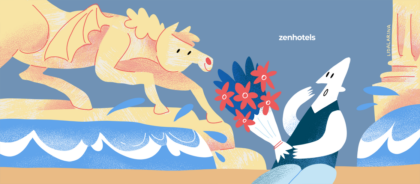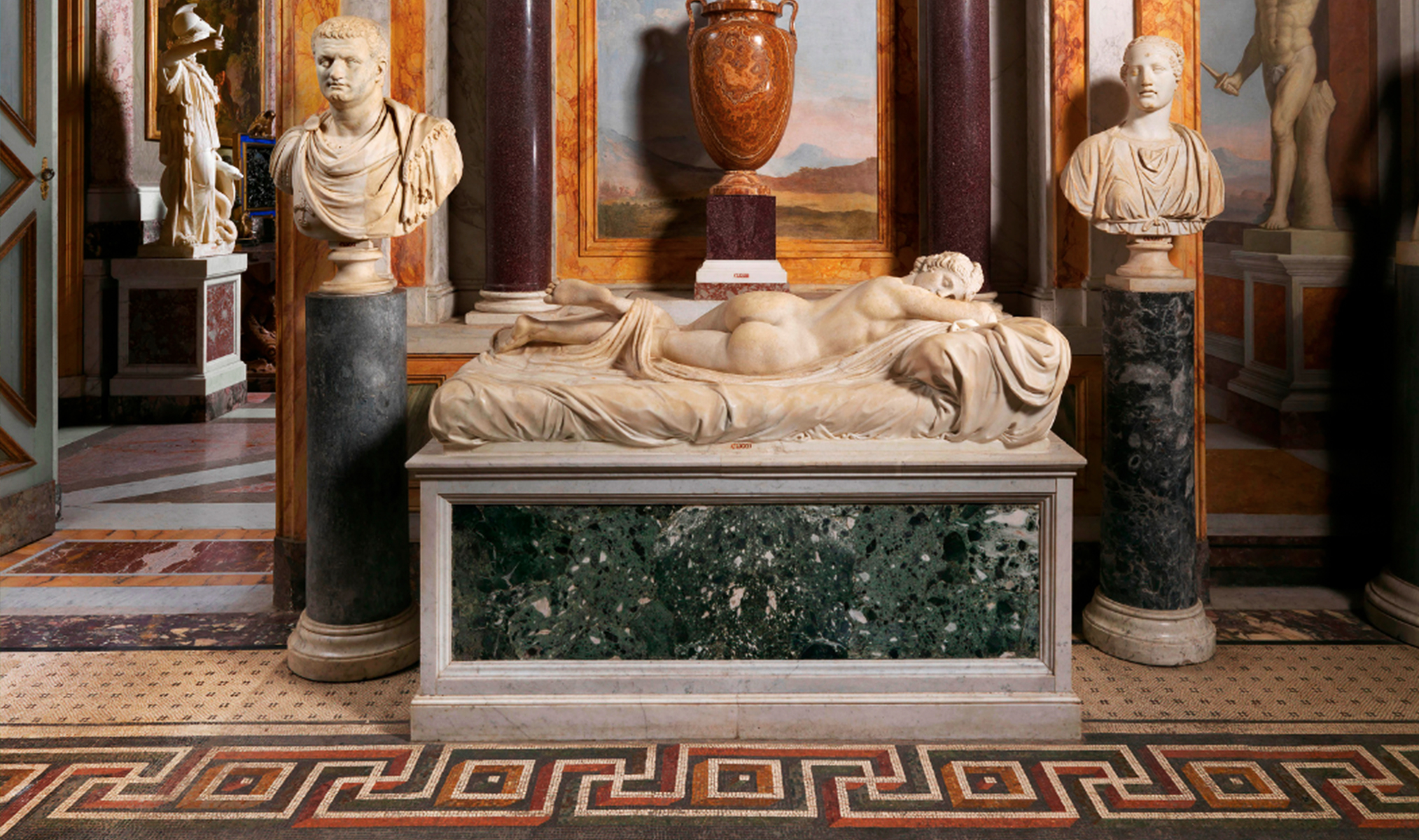Contents
- The Colosseum
- The Vatican Museum and Sistine Chapel
- Trevi Fountain
- The Pantheon
- Palazzo Spada
- St. Peter’s Basilica
- Galleria Borghese
- Castel Sant’Angelo
- Monte Mario Nature Reserve
- Mecato di Campagna Amica del Circo Massimo
- Testaccio Market
- Galleria Doria Pamphilj
- Basilica di Santa Maria Maggiore
- MAXXI Rome
- Piazza di Spagna (Spanish Steps)
- Baths of Caracalla
- Palazzo Altemps
- AcquaMadre Hammam
- Le Domus Romane
- Centrale Montemartini
- Palatine Hill
- Roman Forum
- Arco di Costantino
- Domus Aurea
- Book your Rome accommodation with ZenHotels
1. The Colosseum
- Cost: From €18
- Date: Open year-round
- Website: The Colosseum
Where to stay: Hotel Capo d’Africa – Colosseo
No visit to Rome is complete without stopping by the Colosseum. It would be like visiting Paris without seeing the Eiffel Tower. The building is instantly recognizable, famous for being the home to gladiator fighting for hundreds of years. Originally opened in A.D. 80, the Colosseum held an estimated 50,000 spectators with a 573-yard circumference.
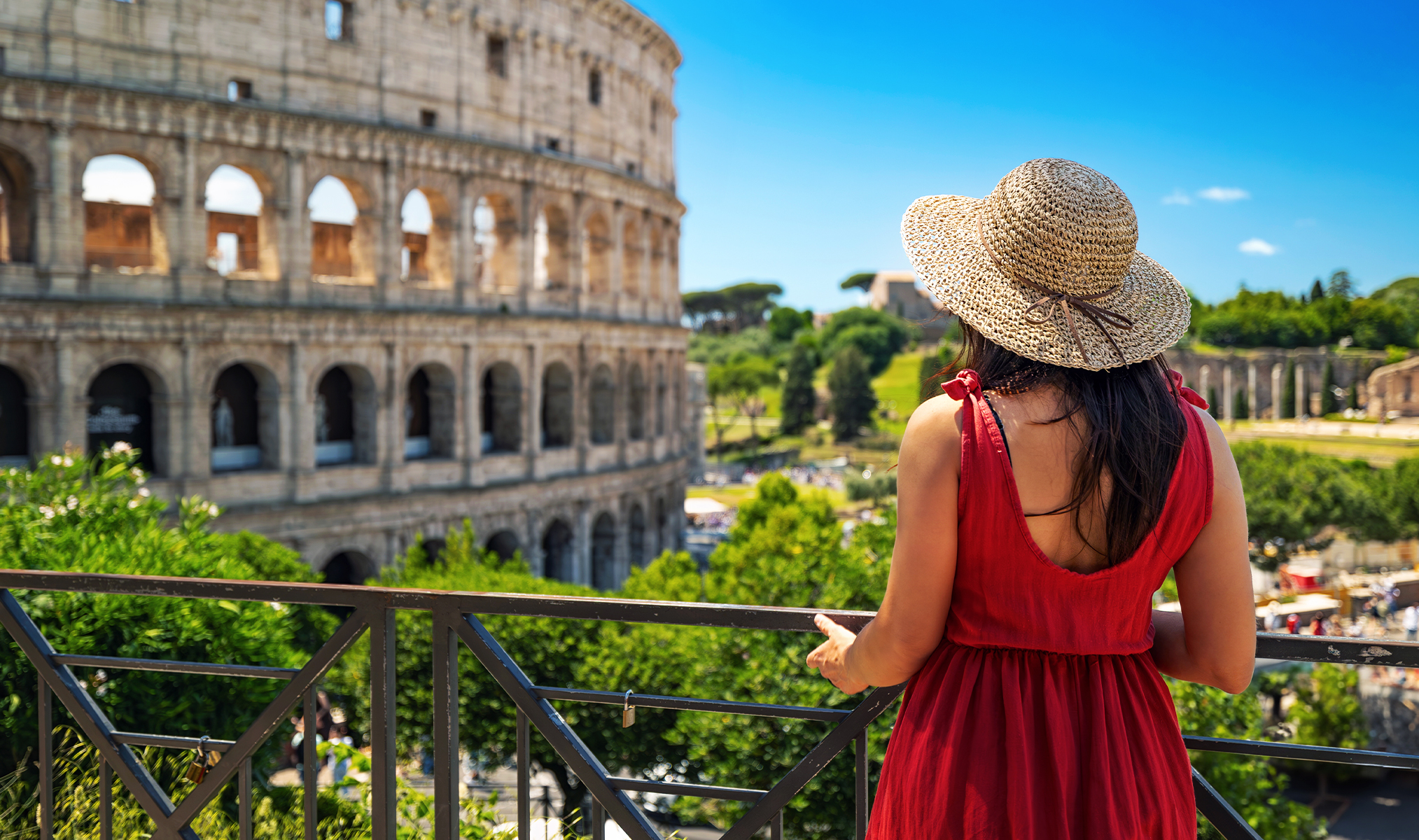
Photo: Photo-Video Lab / Shutterstock.com
It’s considered one of the most important – and recognizable – landmarks in the world. This stunning amphitheater transports you back in time and is seen as one of the new “seven wonders of the world.”
2. The Vatican Museum and Sistine Chapel
- Cost: From €20
- Date: Open year-round
- Website: The Vatican Museum
Where to stay: Tmark Hotel Vaticano
Most of Rome revolves around the Vatican. You don’t have to be a Catholic to appreciate the architecture, history, and symbolism of the Vatican Museum and Sistine Chapel. Here is where you’ll find the famous art collection amassed over the centuries by various popes, along with religious relics and ancient Roman artifacts.
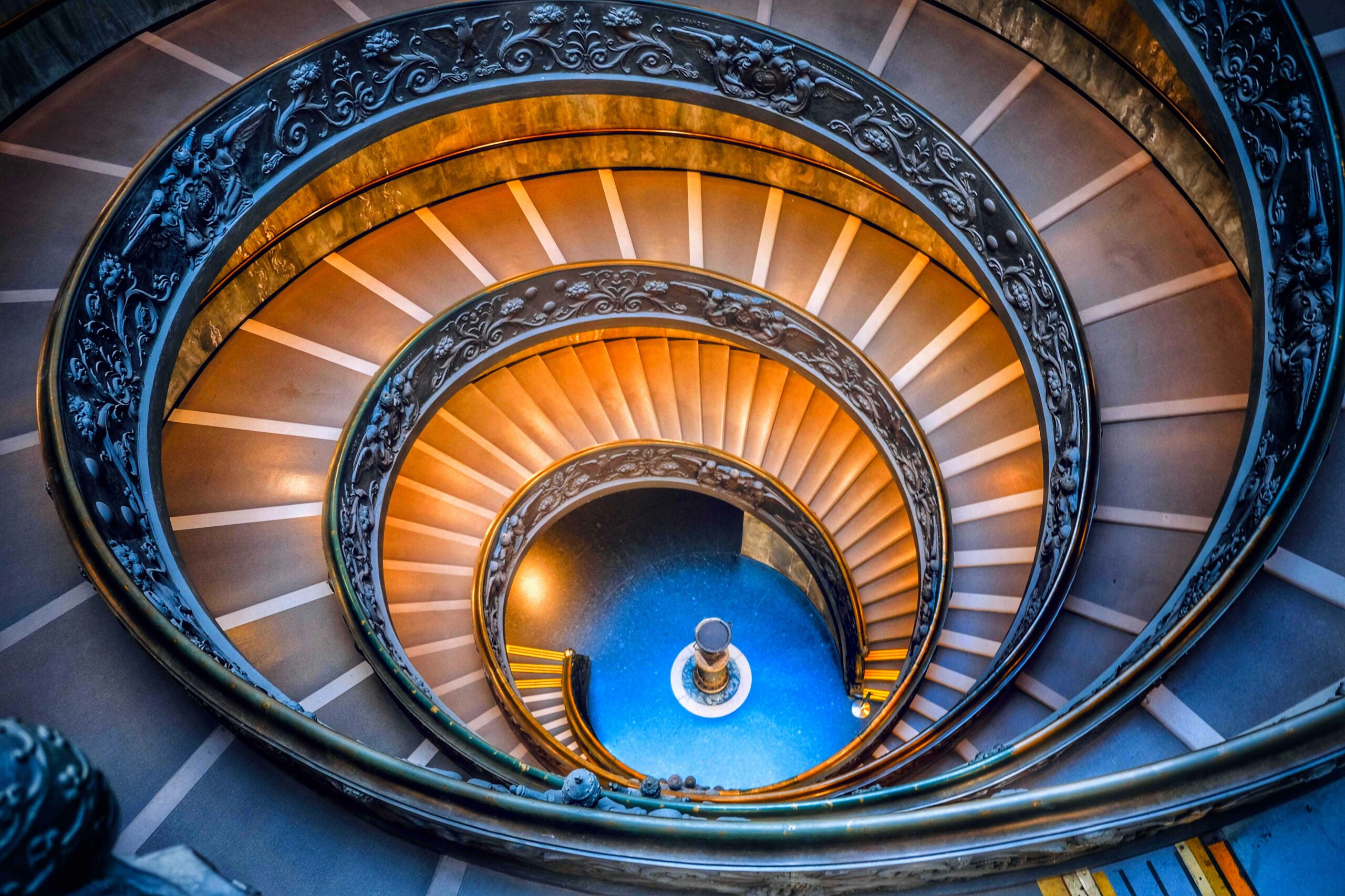
Photo: Vaios Parinos / Shutterstock.com
The museum consists of 54 rooms, each offering a different immersive experience. The Sistine Chapel, famous for its Michelangelo frescos, is the most recognizable room. It’s known for being the room where the conclave meets when selecting a new pope. You’ll want to book your Vatican Museum and Sistine Chapel tickets online ahead of time to skip the long queues at the entrance.
3. Trevi Fountain
- Cost: Free
- Date: Open year-round
- Website: Trevi Fountain
Where to stay: Relais Trevi 95 Boutique Hotel
Did you visit Rome if you didn’t throw a coin in the Trevi Fountain? Tourists have been tossing coins in the Trevi Fountain for decades as it’s meant to represent the hope that you will “one day return” to the city.
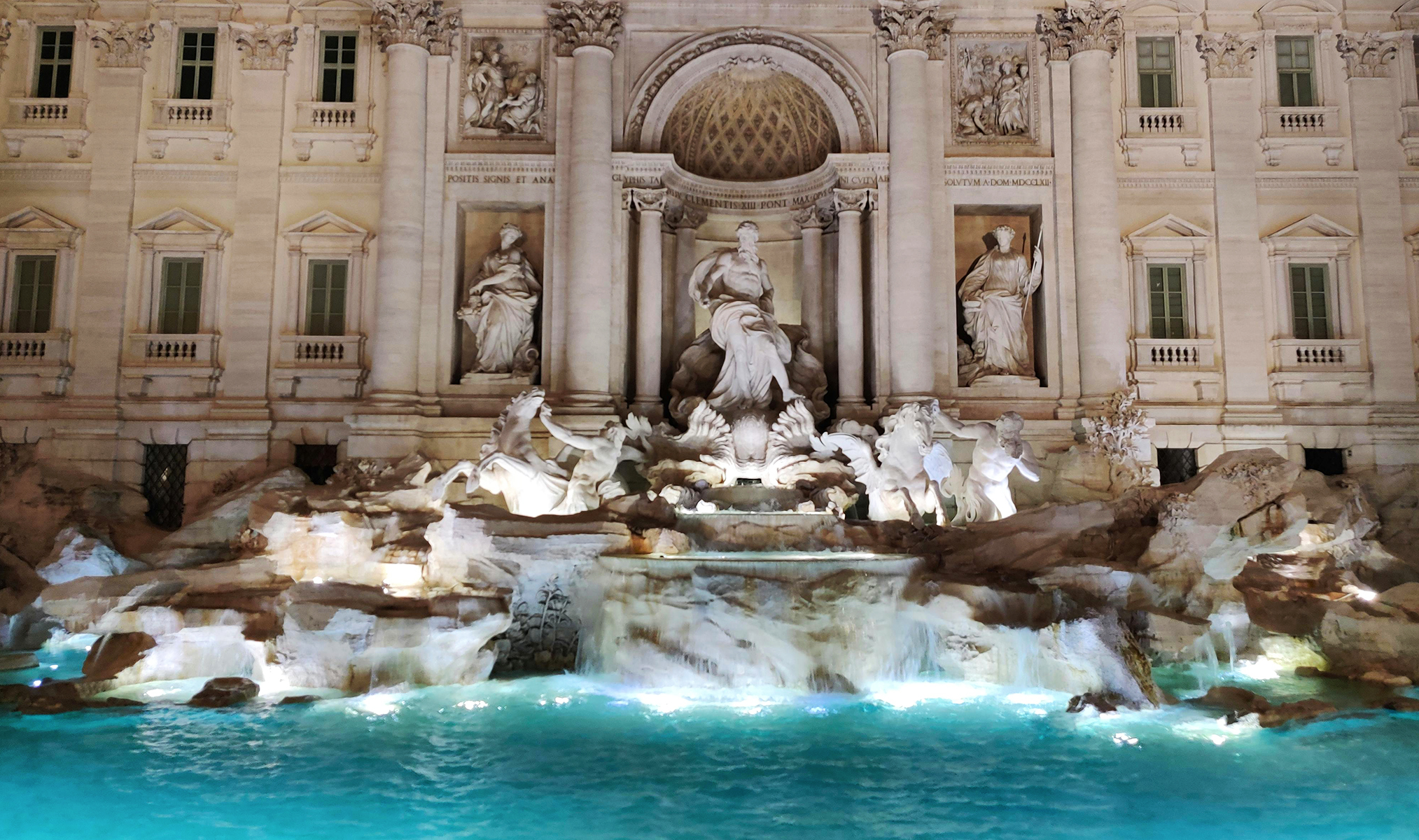
Photo: Jennifer/ pexels.com
Choose your visiting time carefully as this public area fills up fast throughout the day, even in the early mornings. The baroque fountain was built in the 18th century, showcasing Neptune, god of the sea, on his chariot.
4. The Pantheon
- Cost: From €15 with free access on the first Sunday of every month
- Date: Open year-round
- Website: The Pantheon
Where to stay: Hotel Abruzzi
Rome gives you a unique opportunity to immerse yourself in Ancient culture and step back in time. The Pantheon is a must-see in Rome as a former temple that now operates as a church. Established in A.D. 120, some of the most famous men in Roman history are buried here, including Umberto I, Victor Emmanuel II, and Raphael, the Italian painter and architect.
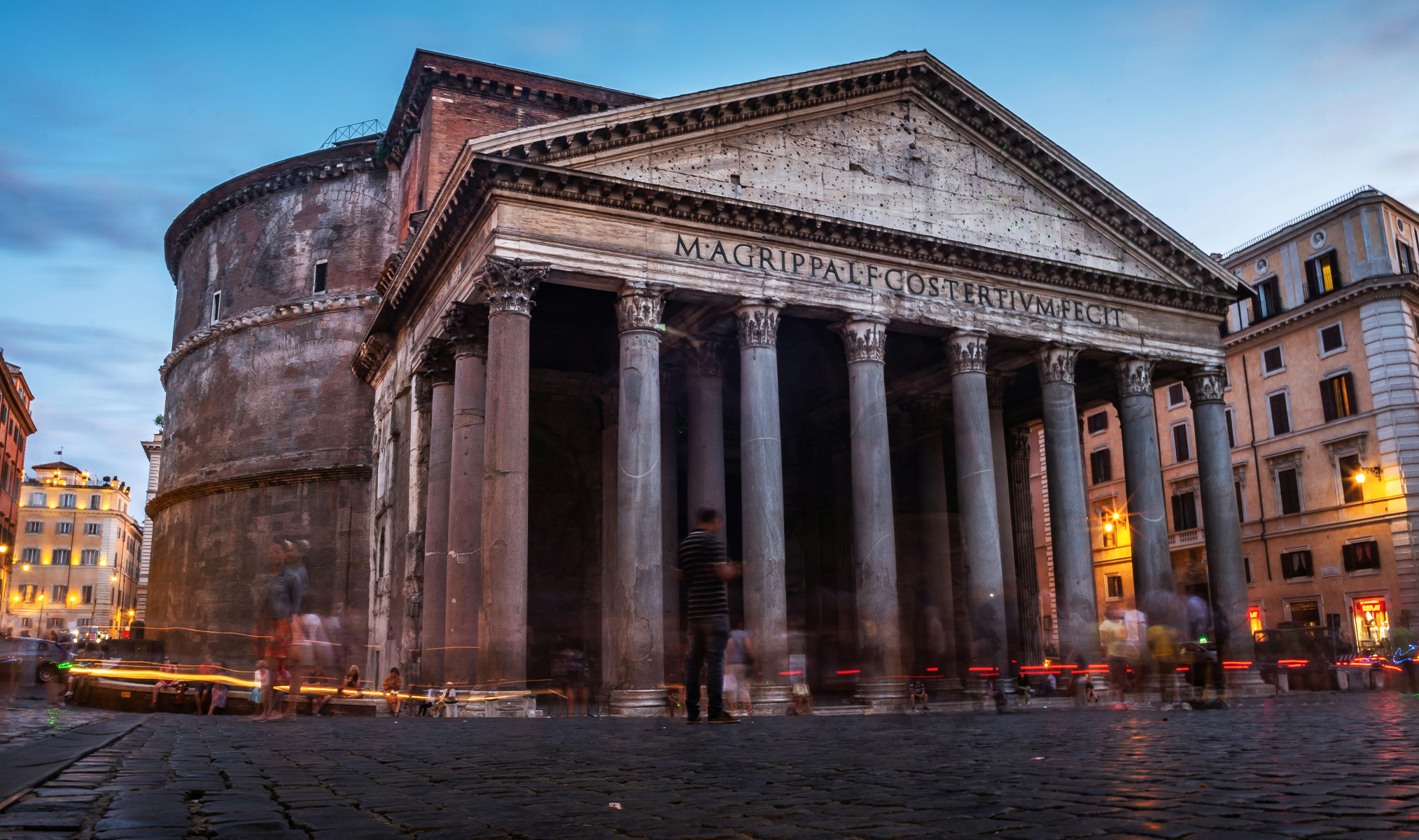
Photo by Daniel Klaffke on Unsplash
The Pantheon was given to the Pope by Emperor Handrain in the early 7th century, evolving into its present-day use as a functioning church. The large open oculus dome sits at the heart of this ancient landmark. It’s another popular tourist destination you’ll want to book tickets or a guided tour for ahead of time
What makes this destination unique is that it’s one of Rome’s best-preserved ancient buildings, due to its conversion into a church. Don’t forget to look at the bronze door as you enter the church.
5. Palazzo Spada
- Cost: Free
- Date: Open year-round
- Website: Palazzo Spada
Where to stay: Hotel Monte Cenci
If you want to escape the hustle and bustle of places like the Colosseum, head to Campo dei Fiori. The Palazzo Spada is a historic building originally conceived in the 16th century before being redesigned in the 17th century by the famous architect Borromini. It’s a must-visit for fans of Baroque and Renaissance artwork due to its extensive art collection. While you’re taking a stroll through the courtyard, look out for the eight clever colonnades that create an optical illusion.
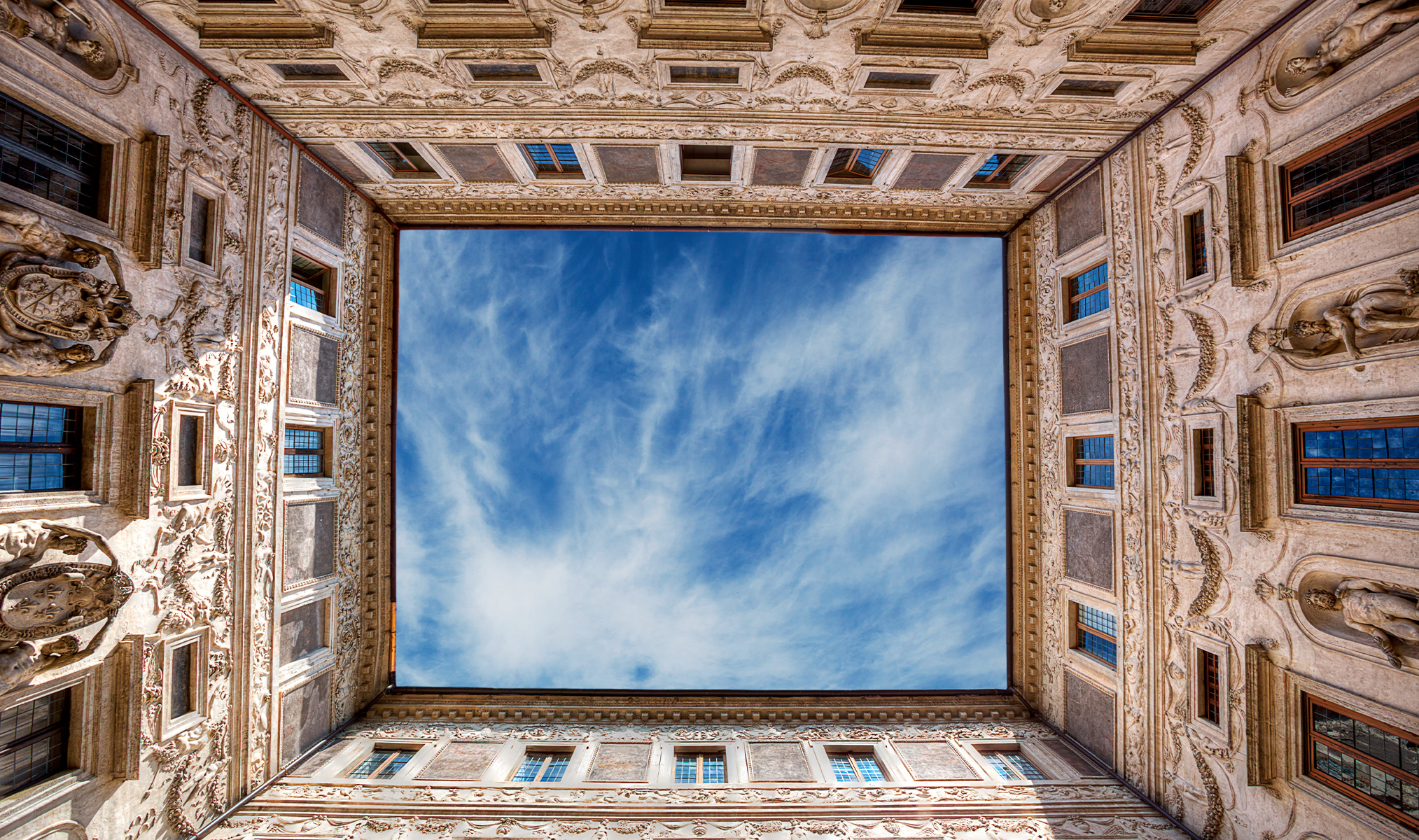
Photo: Phant / Shutterstock.com
You’ll find signs of Baroque in every room of the palace, from opulent marble to frescoes. Artists such as Caravaggio and Titan appear in the palace’s art collection, which features paintings, decorative art, and sculptures. You’ll also find an optical illusion in the Borromini Perspective Gallery.
6. St. Peter’s Basilica
- Cost: From €6 for a self-guided tour
- Date: Open year-round
- Website: St. Peter’s Basilica
Where to stay: Residenza Paolo VI
St. Peter’s Basilica is the most recognizable building in Roman Catholicism. It sits at the heart of Vatican City and is famous for its breathtaking architecture. Although it’s open daily for free, most visitors will choose to pay for a self-guided tour or to walk to the top of the basilica’s dome for a stunning panoramic view of Rome.
If you want to see the Pope, your best opportunity will be during his Wednesday General Audience, when he speaks to the crowd gathered in St. Peter’s Square. Although this event is free, you’ll need to request a ticket ahead of your visit and ensure the Pope is in residence. Alternatively, the Pope frequently addresses the crowd at noon on a Sunday when no tickets are required.
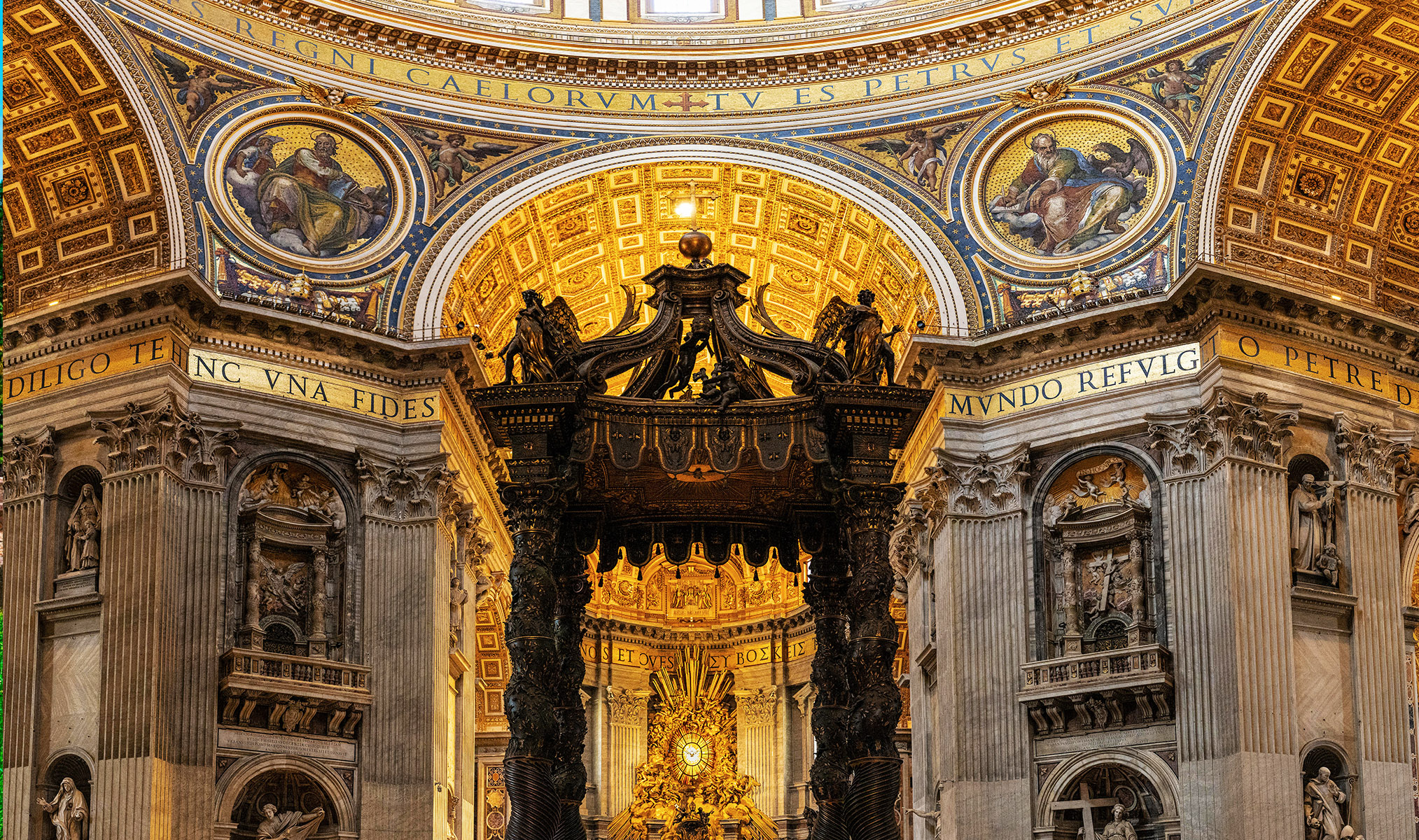
Photo: Matheus De Moraes Gugelmim/ pexels.com
As a functioning church, St. Peter’s Basilica enforces a strict dress code. You’ll want to bring something to cover your shoulders and any visible tattoos. If you want to save time or avoid waiting in line, it’s worth the cost to book a guided tour of the Basilica to learn more about its history.
7. Galleria Borghese
- Cost: From €13 and free for under 18s
- Date: Open year-round
- Website: Galleria Borghese
Where to stay: The Hoxton Rome
Galleria Borghese is one of the most unique art galleries in Rome. Housed within a villa, you’ll get to explore the stunning architecture of the building while taking in some of Italy’s most famous artwork.
The villa was commissioned by Cardinal Scipione Borghese to house his extensive art collection, staged across two floors. Look out for significant art pieces, including Caravaggio’s “David with the Head of Goliath” and “Boy with a Basket of Fruit,” along with Bernini’s sculptures of Apollo, David, and Daphne.
8. Castel Sant’Angelo
- Cost: From €17
- Date: Open year-round
- Website: Castel Sant’Angelo
Where to stay: Capricci Romani
Built in the 2nd century, the Castle of the Holy Angel was originally made as a mausoleum for Emperor Hadrian. Its focus shifted after a supposed appearance by Archangel Michael in A.D. 590 on the roof, bringing an end to the ongoing plague, leading to its association with the Holy Angel.
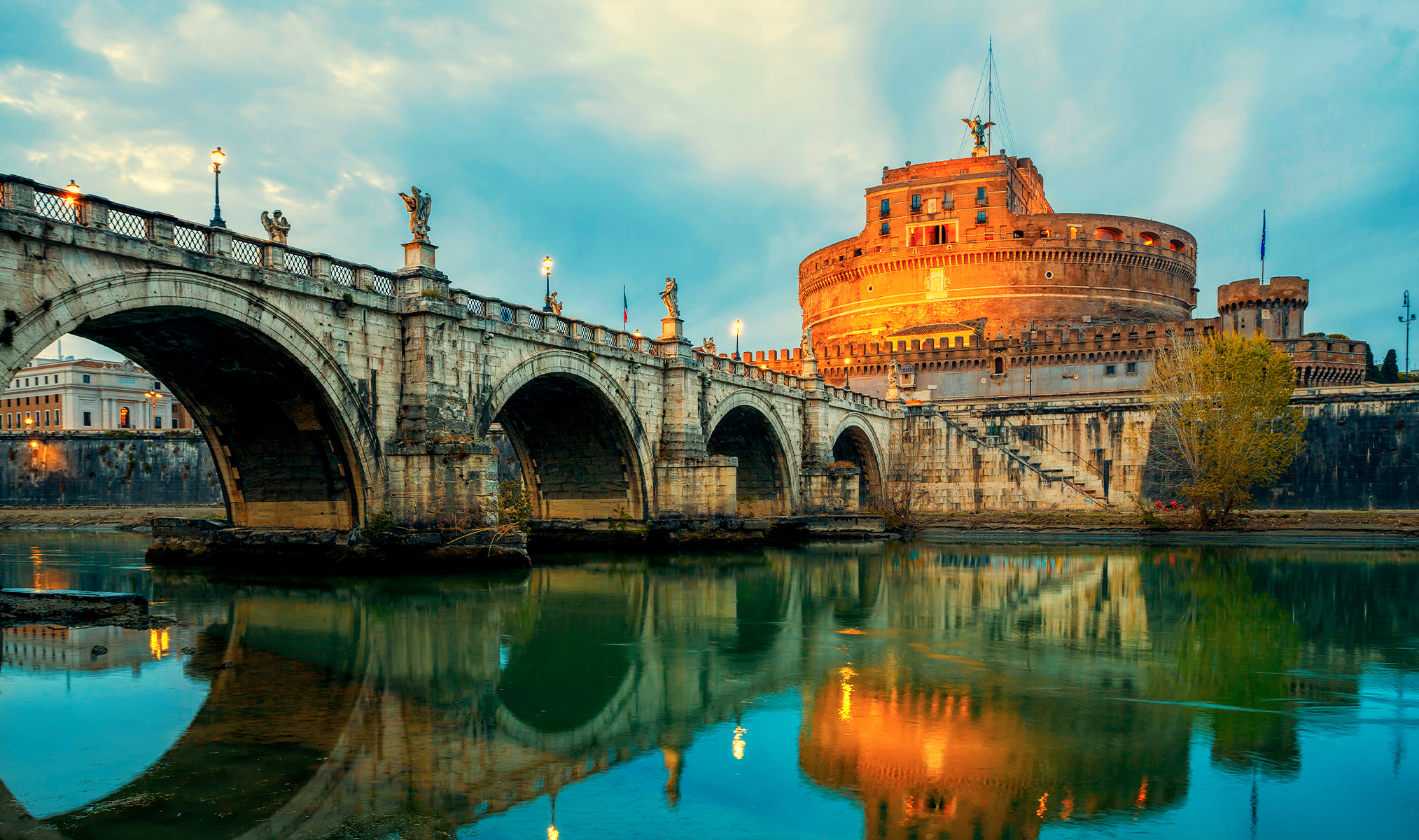
Photo: Vlas Telino studio/ Shutterstock.com
Pope Pius II placed a bronze statue at the top of the castle. It’s connected to the Vatican through underground tunnels and was used as a fortress and castle throughout history by various popes.
9. Monte Mario Nature Reserve
- Cost: Free
- Date: Open year-round
- Website: Monte Mario Nature Reserve
Where to stay: Gemini Suite
If you’re a fan of nature, you want to make the time to explore the Monte Mario Nature Reserve. It’s the highest of the seven hills throughout Rome and less popular than Villa Borghese, making it a great option for those who want a lowkey day out.
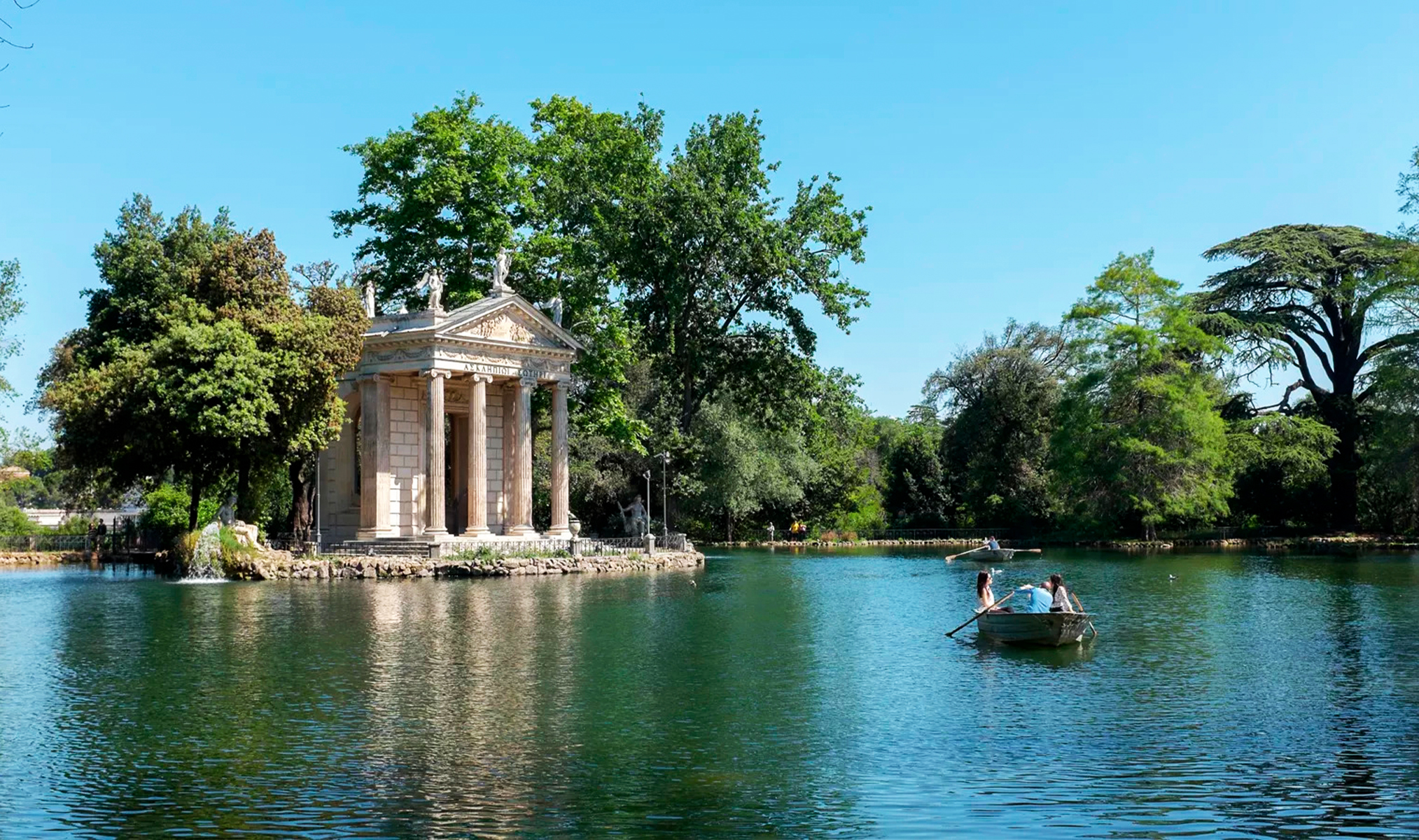
Photo: italia.it
You’ll get some of the best views of the city as the natural reserve is spread across 100 hectares. Look out for the reserve’s wildlife, which includes everything from hedgehogs to hawks and foxes. You’ll find an array of walking trails designed for different abilities.
10. Mecato di Campagna Amica del Circo Massimo
- Cost: Free
- Date: Open Saturdays and Sundays from 8am to 3pm
- Website: Mecato di Campagna Amica del Circo Massimo
Where to stay: Foro Romano Luxury Suites
Mercato di Campagna Amica is Rome’s largest farmers’ market. While other cities have seen their farmers’ markets be modernized, this one still feels authentically down to earth. It’s only open during weekends with all products sold at the market being either made or grown within 100 kilometers of the market. Almost all the vendors are from Lazio, offering a selection of some of Italy’s most famous products.
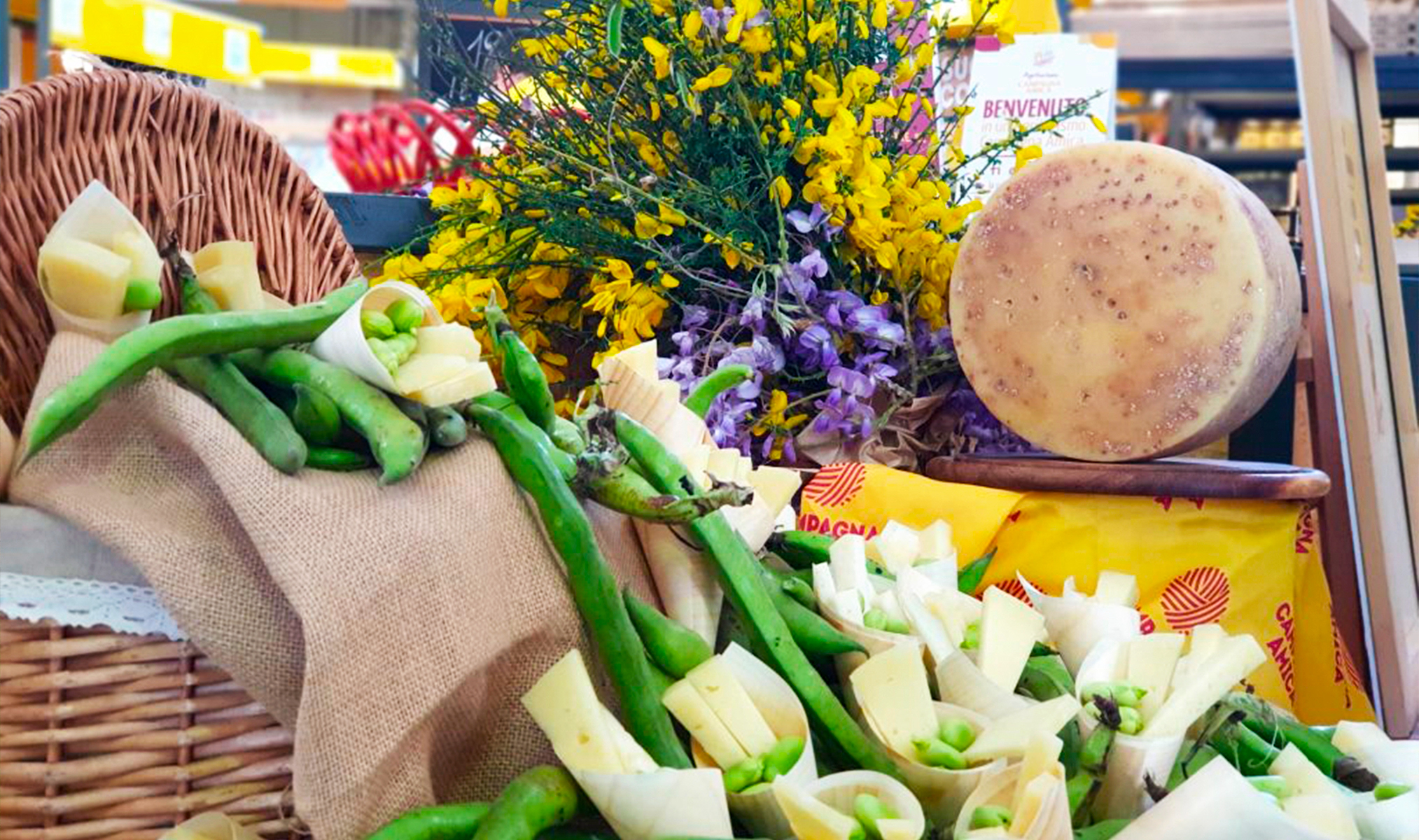
Photo: campagnamica.it
This market is a great choice for picking up some affordable picnic ingredients, from olive oil to prosciutto and freshly baked bread.
11. Testaccio Market
- Cost: Free
- Date: Open daily from 7am to 2:30pm, except Sundays
- Website: Testaccio Market
Where to stay: San Anselmo
If you’re looking for a market during the week, check out Testaccio. You’ll find it in one of Rome’s busiest districts, offering all the traditional cuisine and seasonal foods you can expect from an Italian market. It’s a great option if you want to expand your culinary palette or find an affordable lunch option.

Photo: freepik/freepik.com
This market isn’t exclusively about food. You’ll find everything from a hair salon to independent stalls selling shoes, household items, and clothes. Testaccio isn’t as busy as Campo de Fiori, Rome’s most popular market in the historic center. You’ll find that most of the locals do their daily shopping here. Look out for some of the most popular stalls, including Casa Manco for pizza and Mordi e Vai for sandwiches.
12. Galleria Doria Pamphilj
- Cost: From €11
- Date: Open year-round
- Website: Galleria Doria Pamphilj
Where to stay: Six Senses Rome
Rome has no shortage of art museums to explore. Galleria Doria Pamphilj deserves a spot on this list as it houses one of the city’s largest private collections, accumulated by several wealthy families. The property is still owned today by the Doria Pamphilj family and is a must-visit for fans of 16th and 17th-century art, including Raphael and Caravaggio. It’s considered an underrated gem as most tourists miss it, even though it’s only a few steps from Piazza Venezia and a short walk from the Roman Forum.
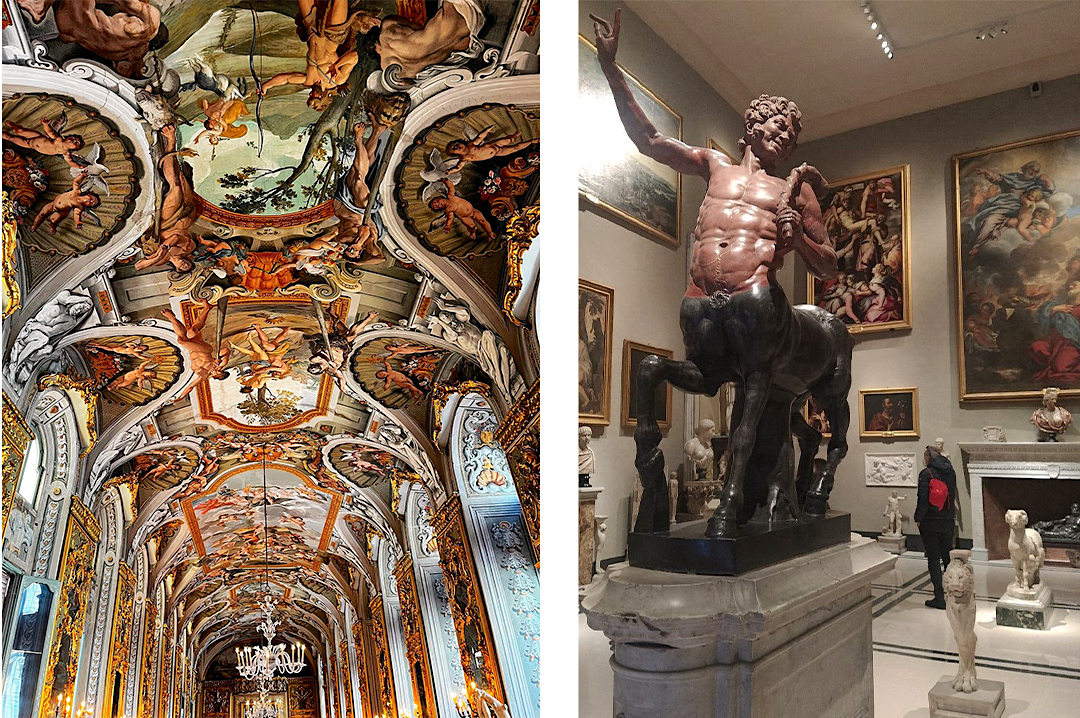
Photo:Ettorino05 and Jo08/ tripadvisor.com
If you don’t have time to visit Versailles, you’ll find a similar hall of mirrors on the second floor of this house with its iconic chandeliers and antique statues. You can pay a little extra to visit the “secret apartment,” a more intimate experience than you’ll find at most museums and private houses.
13. Basilica di Santa Maria Maggiore
- Cost: Free
- Date: Open year-round
- Website: Basilica di Santa Maria Maggiore
Where to stay: Doria Palace Boutique Hotel
Rome has four papal churches, including the Basilica Papale di Santa Maria Maggiore, which is also the largest Marian church in the city.
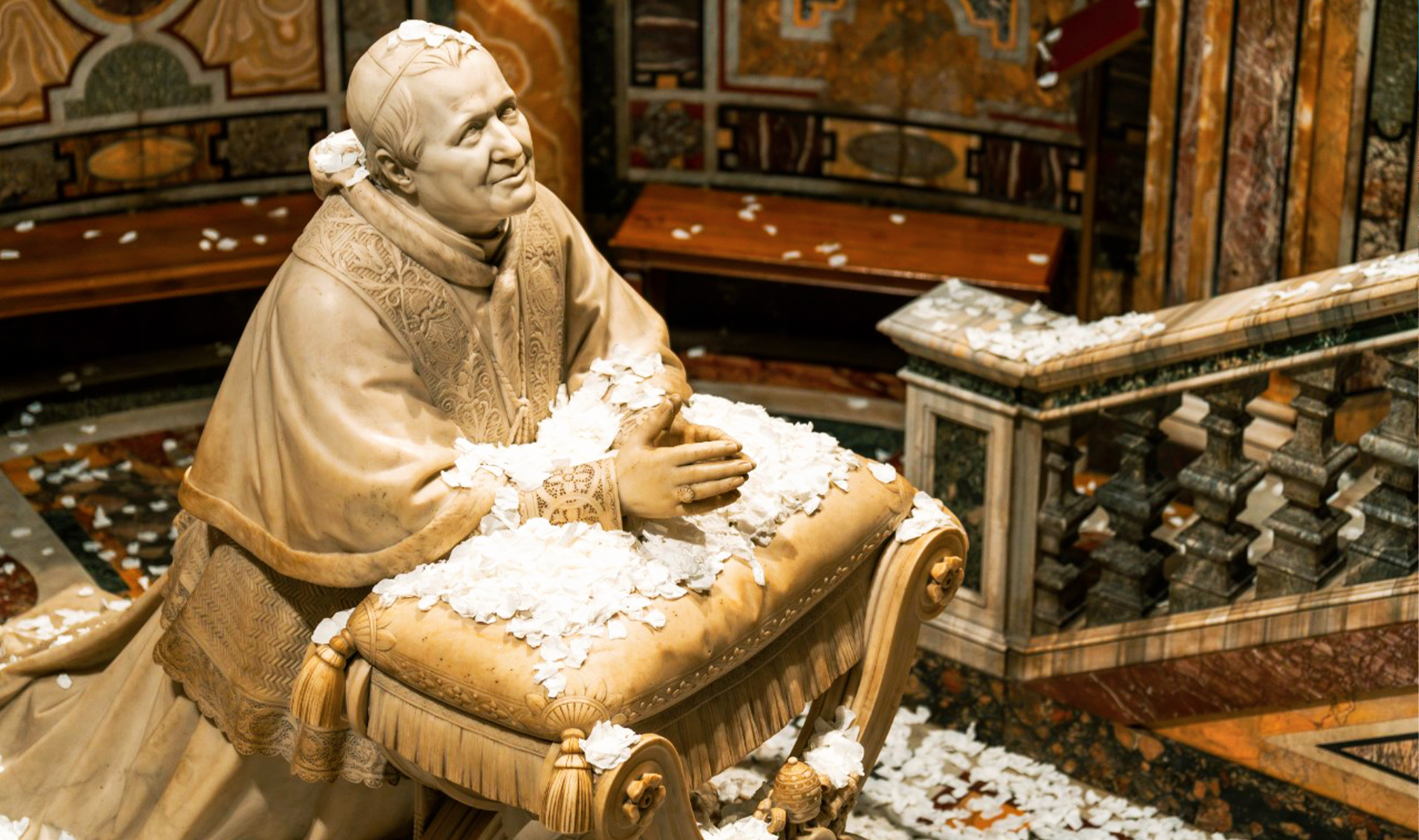
Photo: / basilicasantamariamaggiore.va
It sits on the Esquiline hill and dates to the 5th century. The most famous holy relics associated with the church are pieces of wood believed to be from Jesus’ crib, stored under its altar.
14. MAXXI Rome
- Cost: From €11 online
- Date: Open year-round
- Website: MAXXI Rome
Where to stay: Hotel Villa Glori
Ancient history and 16th-century art aren’t for everyone. If you prefer contemporary art, architecture, and cinema, you’ll be right at home in MAXXI. This museum is a place you can spend hours exploring with countless exhibitions.
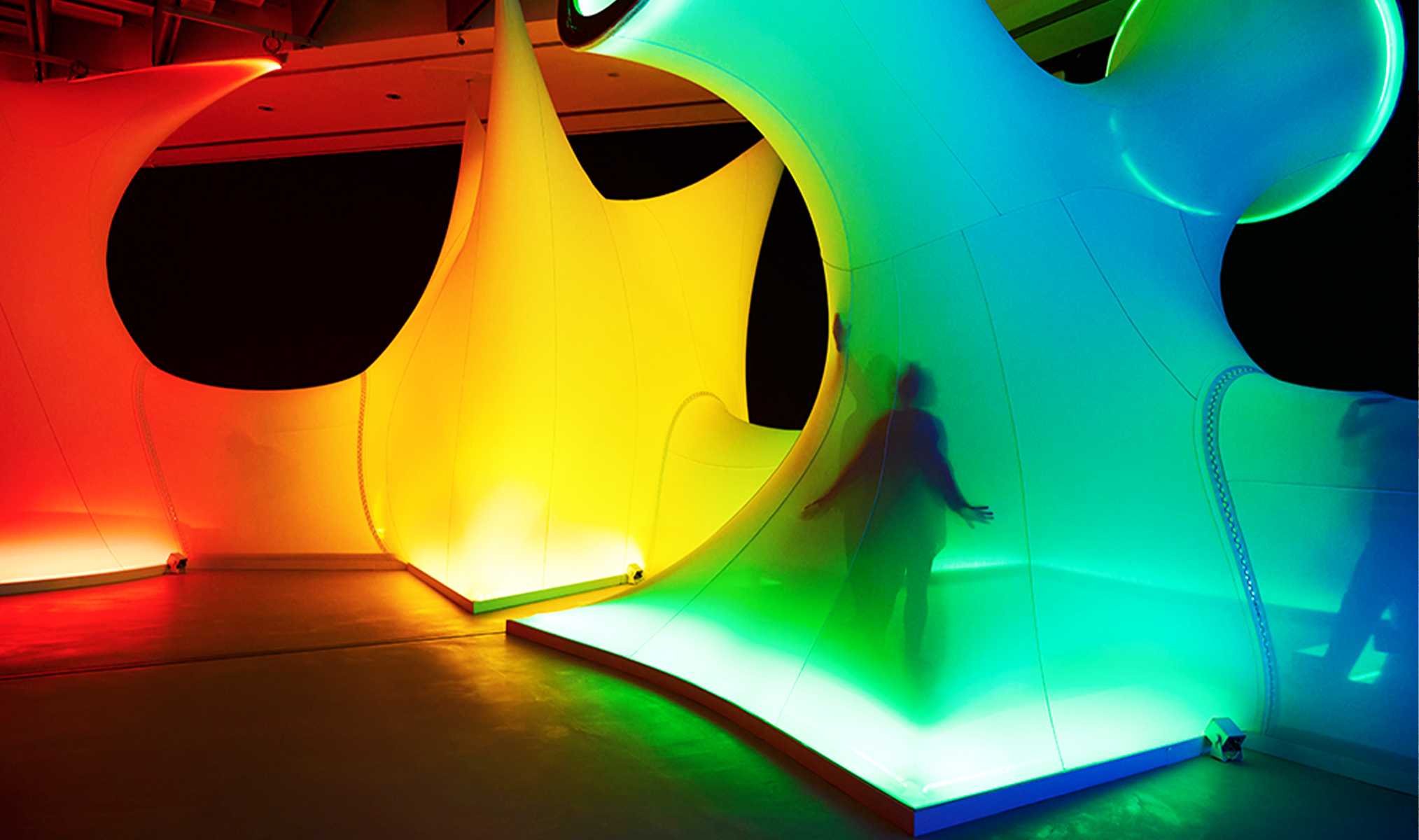
Photo: Сinzia Capparelli
It was designed by Zaha Hadid and is the most popular contemporary museum in Rome, making you feel like you’ve entered a labyrinth across five floors with walls covered in different artwork and spaces for performing arts and open cinemas.
15. Piazza di Spagna (Spanish Steps)
- Cost: Free
- Date: Open year-round
- Website: Piazza di Spagna
Where to stay: Croce Apartments
Catch your breath and reflect on your time in Rome by stopping by the famous Spanish steps. You’ll find the Piazza di Spagna just outside the Trinita dei Monti church with 135 Spanish steps separating them, bringing you to a stunning water fountain designed by Pietro Bernini.
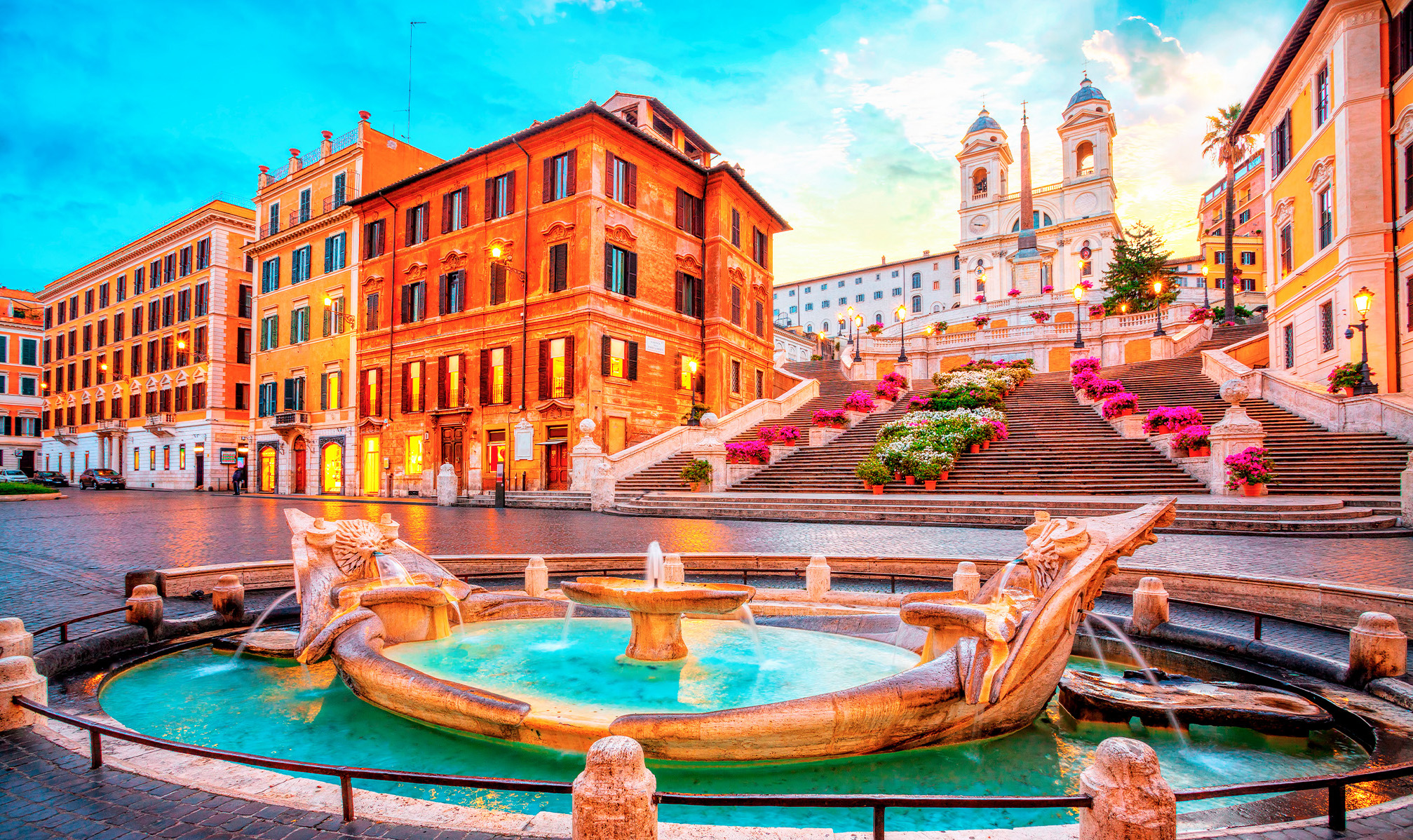
Photo: Vlas Telino studio/ Shutterstock.com
These Spanish steps have become a popular spot for tourists, offering a breathtaking view of Rome amongst the hustle and bustle.
16. Baths of Caracalla
- Cost: €10 and free on the first Sunday of each month
- Date: Open year-round
- Website: Baths of Caracalla
Where to stay: Hotel San Giovanni Roma
The Terme di Caracalla – also known as the Baths of Caracalla – are ruins of a bathhouse from the 3rd century. It’s believed to have been one of the city’s largest bathing areas, holding up to 1,500 visitors.
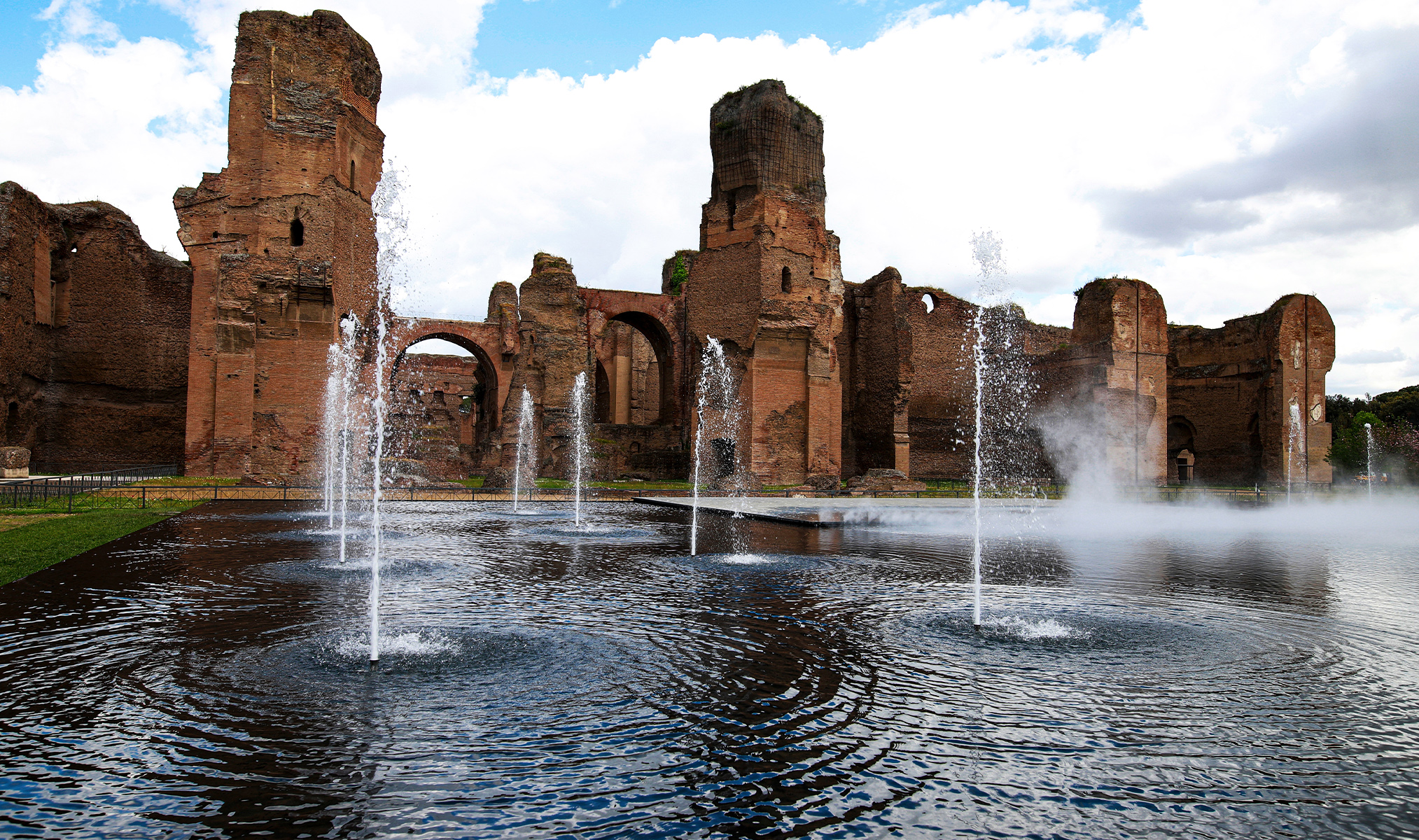
Photo: Maria Letizia Avato/ Shutterstock.com
These thermal baths were central to everyday Roman life with the building uniquely housing other facilities, including a library and gardens. The ruins give you an immersive sense of the traditional Roman baths and the Rome Opera House often hosts performances here during the summer months.
17. Palazzo Altemps
- Cost: From €8
- Date: Open year-round, but closed Mondays
- Website: Palazzo Altemps
Where to stay: Affreschi Su Roma B&B
The Palazzo Altemps gives you a sense of the grandeur of 16th and 17th Rome. This stunning building has a unique history as many of its ancient statues were restored by some of Rome’s most influential sculptors.
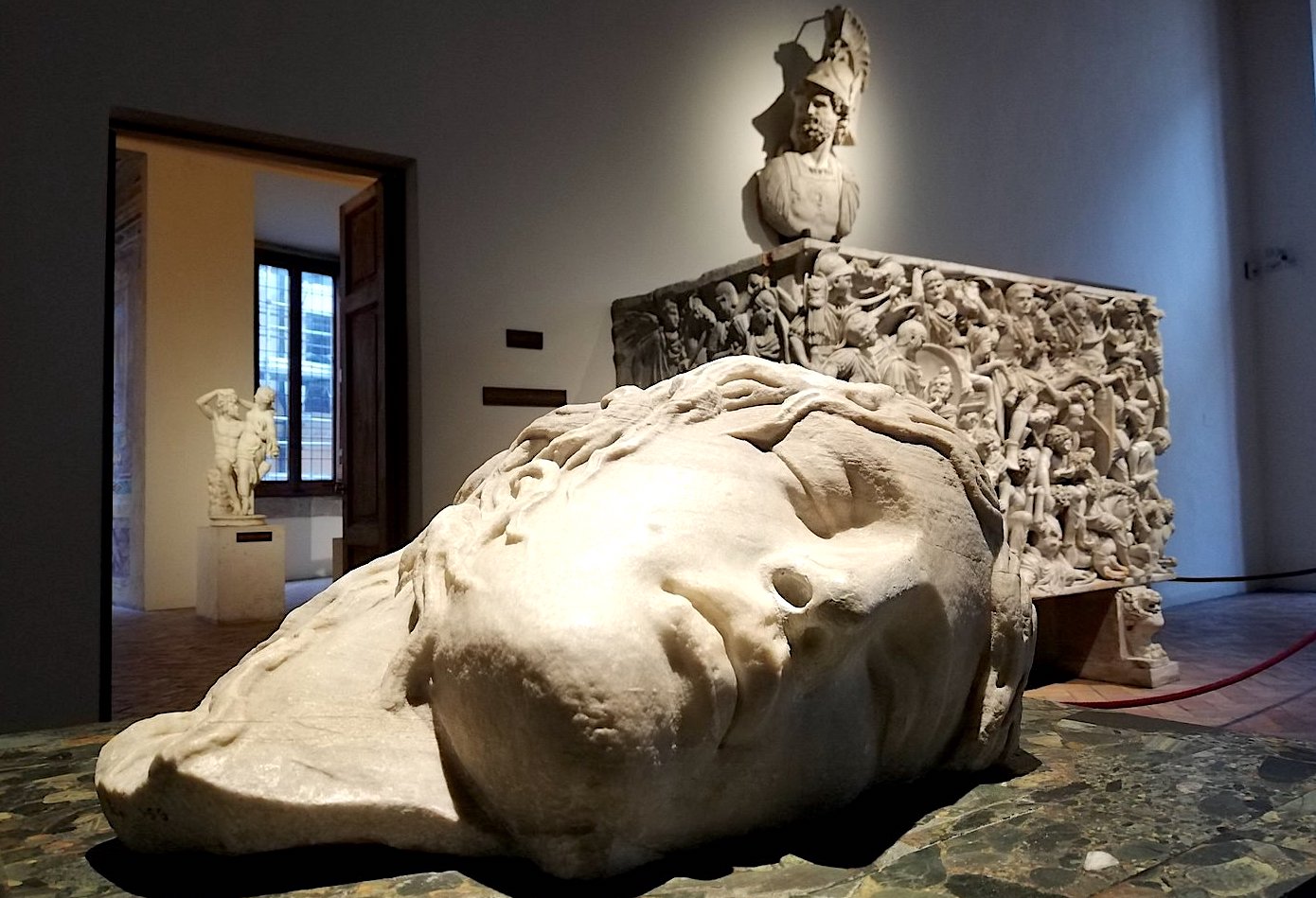
Photo: Angela/ tripadvisor.com/
The Ares on display in the gallery was restored by Berini, while Alessandro Algardi returned the Athena sculpture back to her original design. This aristocratic mansion was built by the Riario family and houses various collections, ranging from ancient Egyptian to the Renaissance.
18. AcquaMadre Hammam
- Cost: From €70
- Date (e.g. if this is an exhibition – until March 30)
- Website: AcquaMadre Hammam
Where to stay: NEMAN Maison Experience
Experience the nearest thing to a traditional Roman thermal bath by booking in at Acqua Madre Hammam. It’s an urban spa at the heart of the city, recreating the authentic Roman thermal experience with vaulted rooms that follow a similar layout to the traditional bathing houses.

Photo: acquamadre.it
Although the thermal spa is the main attraction, you can also book in for a range of massages and spa treatments.
19. Le Domus Romane
- Cost: From €12
- Date: Open year-round, except Tuesdays
- Website: Le Domus Romane
Where to stay: H10 Palazzo Galla
Not all ruins leave you feeling uninspired. If you struggle to visualize what ruins may have looked like in their glory days, visit Le Domus Romane.
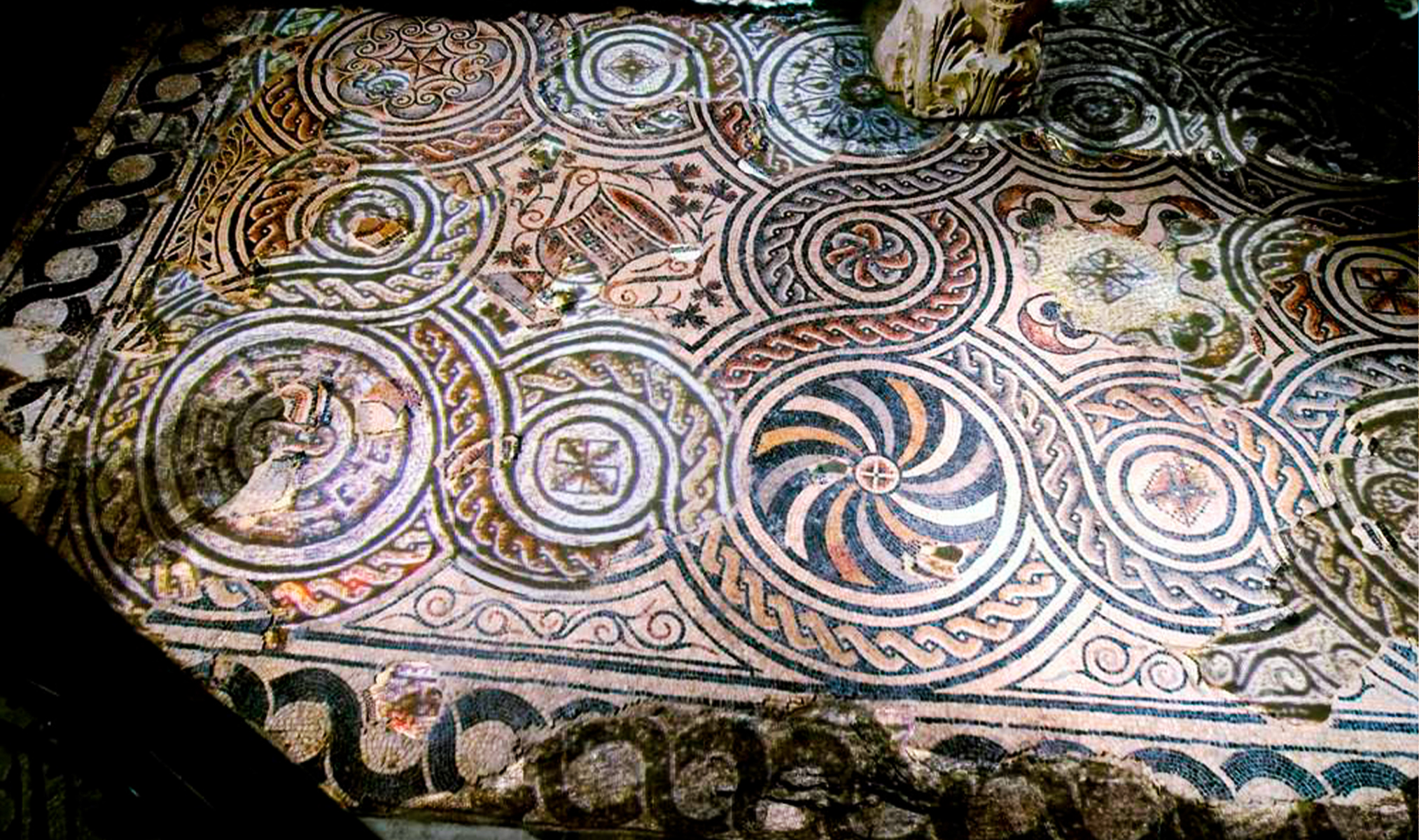
Photo: palazzovalentini.it
Located under the Province of Rome council offices, the remains of several lavish houses give you a sense of what it was like living in Rome. There are four daily tours hosted in English with the average visit lasting 75 minutes.
20. Centrale Montemartini
- Cost: From €11.50
- Date: Open year-round, except Mondays
- Website: Centrale Montemartini
Where to stay: Residenza Matteucci
One of the most unique museum venues you’ll find in Rome is Centrale Montemartini. Housed within the decommissioned former Erstehile Power Station, you’ll see the building’s boilers and turbines juxtaposed against the ancient artifacts on display. This museum is a great addition to your itinerary if you’re returning to Rome or want an alternative to the Borghese museums.
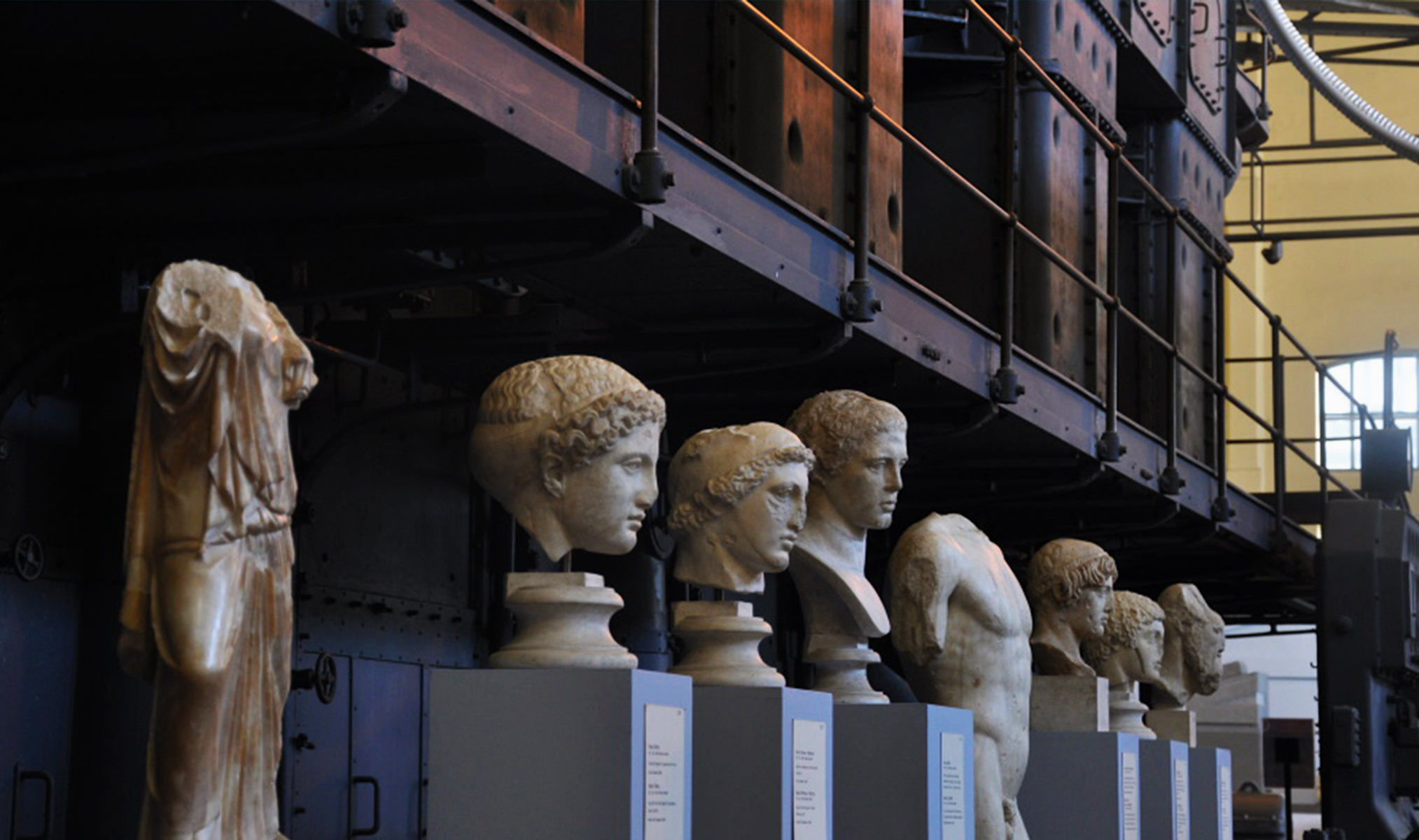
Photo: acerobianco /tripadvisor.com
Jazz concerts are occasionally held at this museum, and you may be able to take advantage of a joint ticket if you plan on visiting the Capitoline Museum. Highlights of the museum include the Sarcophagus of Crepereia and the Tagato Barberini.
21. Palatine Hill
- Cost: From €18
- Date: Open year-round
- Website: Palatine Hill
Where to stay: Il Monastero Collection
If you want to visit a museum but don’t want to be stuck indoors, head to Palatine Hill. It’s home to the former palaces of some of Rome’s most famous emperors, along with medieval churches and picturesque gardens.
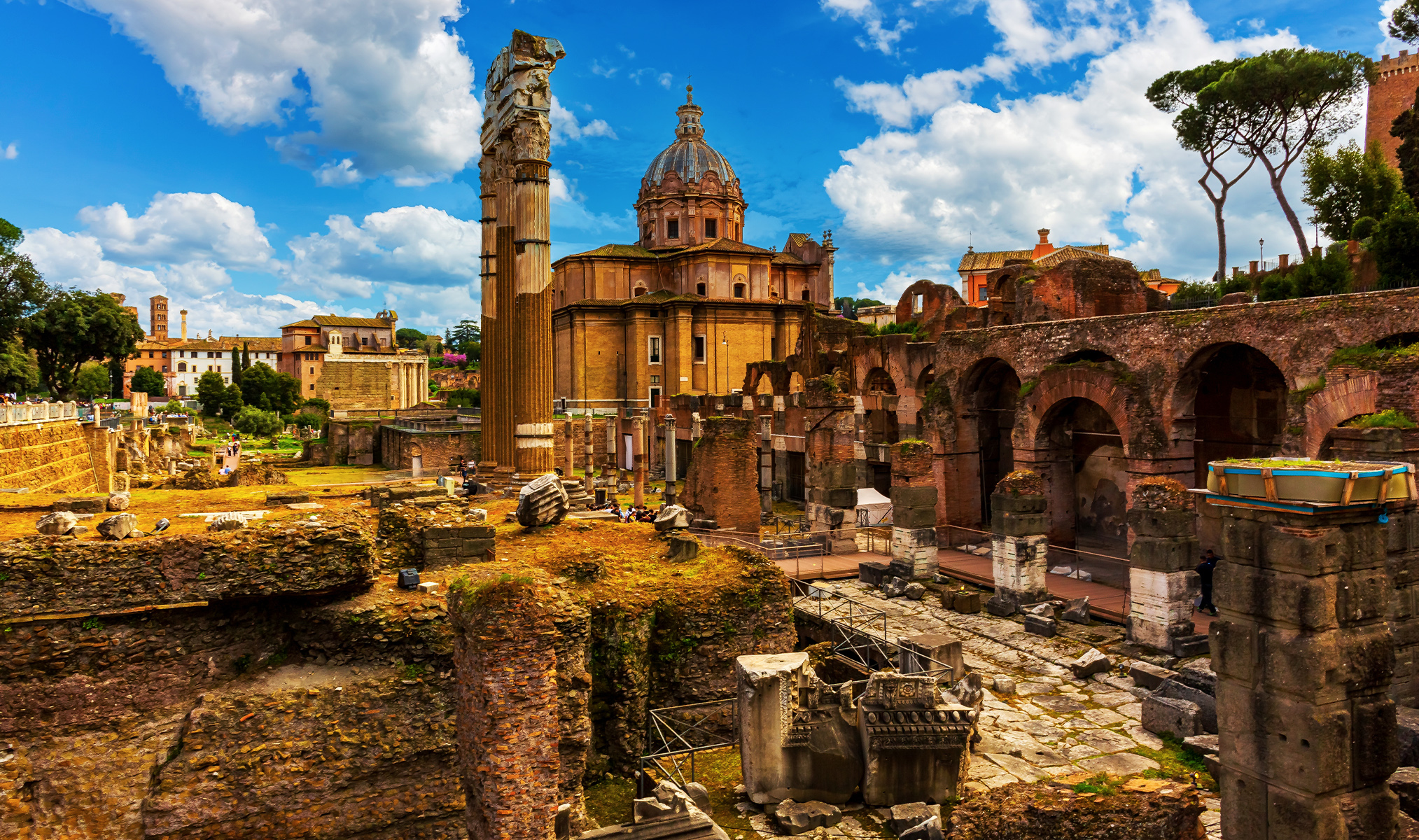
Photo: Kevin Khanh Ngo/ Shutterstock.com
You can often buy an admission ticket that will cover Palatine Hill, the Colosseum, and the Roman Forum. Most tourists visit all three major attractions on the same day.
22. Roman Forum
- Cost: From €18
- Date: Open year-round
- Website: Roman Forum
Where to stay: Nerva Boutique Hotel
Most tourists heading to the Roman Forum are visiting as part of a joint tour with the Colosseum. However, this space is worthy of its own visit. You’ll get a greater understanding of the most iconic parts of Roman history, from the reign of Julius Caesar to the daily life of the gladiators. It served as the heart of public and religious life in ancient Rome, representing the grandeur of the Roman Empire.
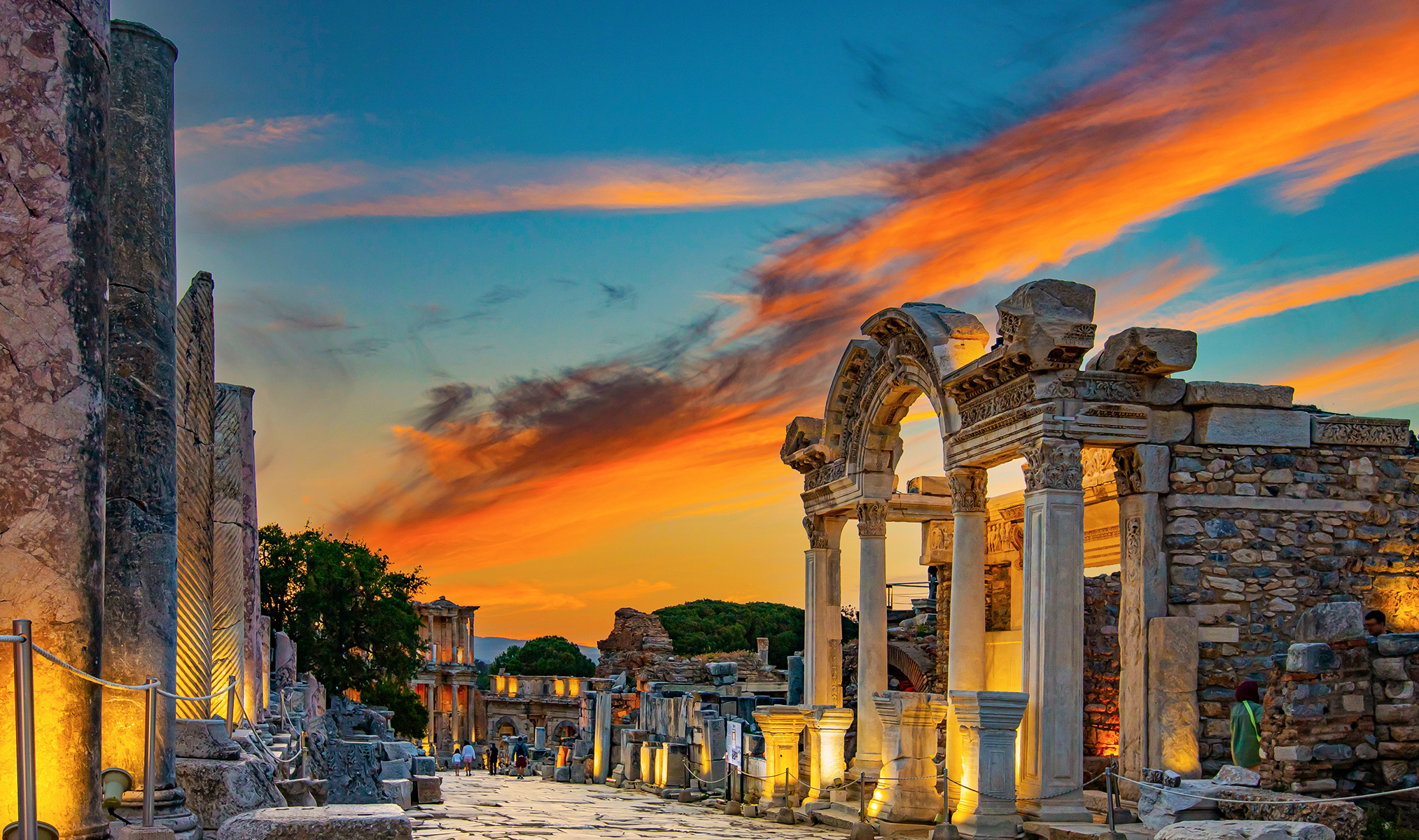
Photo: Kadagan / Shutterstock.com
Excavations of the Roman Forum only began in the 20th century after the forum fell into disrepair following the fall of the Roman Empire. It sits at the foot of Palatine Hill and is best explored with a tour guide as the large space can otherwise feel confusing and overwhelming.
23. Arco di Costantino (Arch of Constantine)
- Cost: Free but paid tickets available
- Date: Open year-round
- Website: Arco di Costantino
Where to stay: Palazzo Manfredi – Small Luxury Hotels of the World
The Arch of Constantine was built in A.D. 315 by Emperor Constantine to celebrate his victory over Maxentius at the Battle of the Milvian Bridge three years prior. It’s located close to the Roman Forum and Colosseum with most tourists visiting it on route to these destinations or as part of a walking tour.
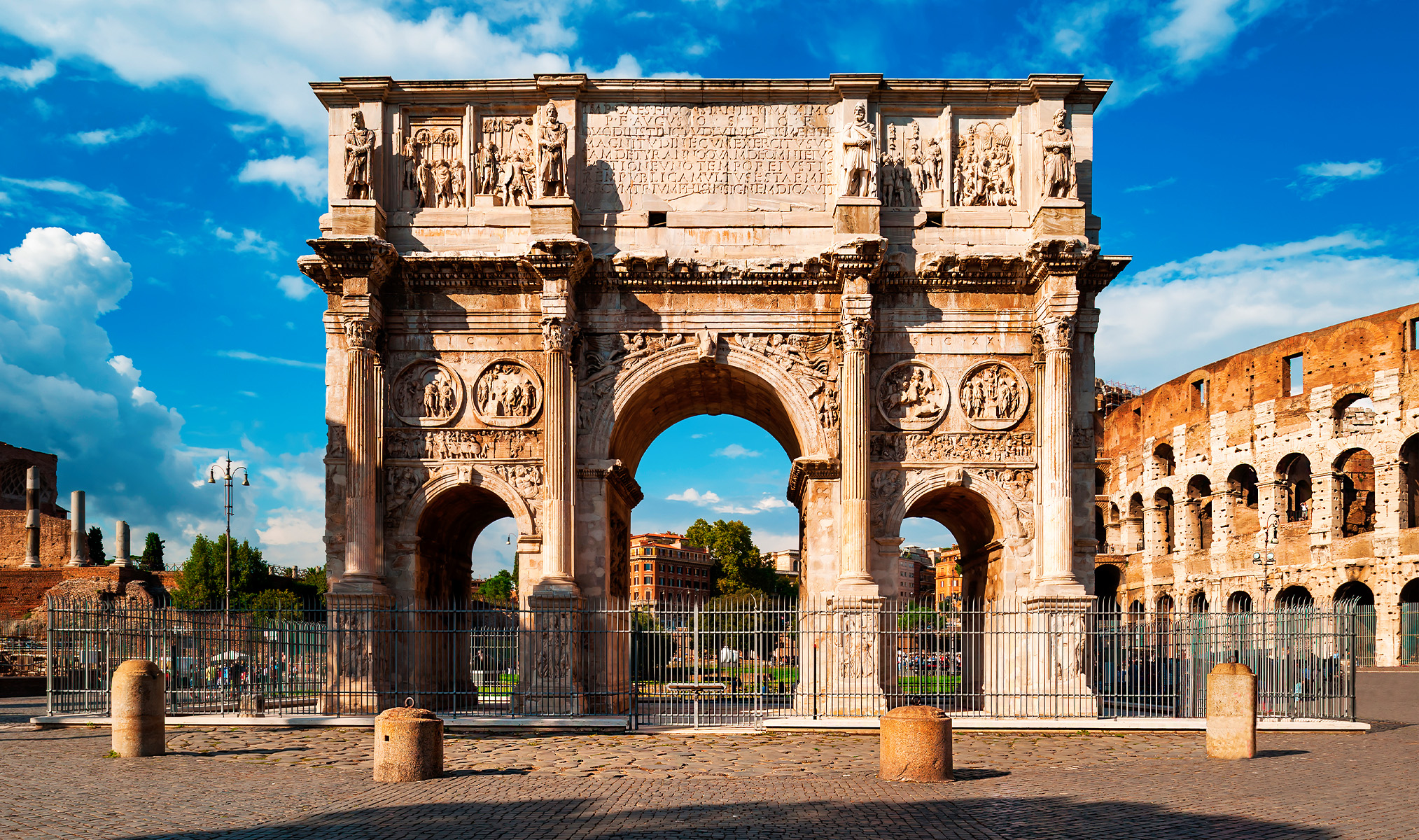
Photo: Giovanni Rinaldi / Shutterstock.com
Tours are available for tourists who want to explore the monument fully and other nearby attractions, including the Colosseum.
24. Domus Aurea
- Cost: From €18
- Date: Year-round, but only on weekends
- Website: Domus Aurea
Where to stay: Residenza Argileto
Domus Aurea was built by Emperor Nero, one of Rome’s most famous rulers, in the 1st century after a fire wiped out most of the city. The name reflects the extensive amount of gold used in its construction. Nero died before the building was completed, but you can still see the precious stones and marbles included in its development.
Work is currently ongoing to restore the pavilion, so it’s only open at the weekend with guided tours required. Most tours are hosted by archaeologists who work on the site, giving you a unique insight into the building’s history and the ongoing conservation work. You’ll find Domus Aurea immediately to the northeast of the Colosseum.
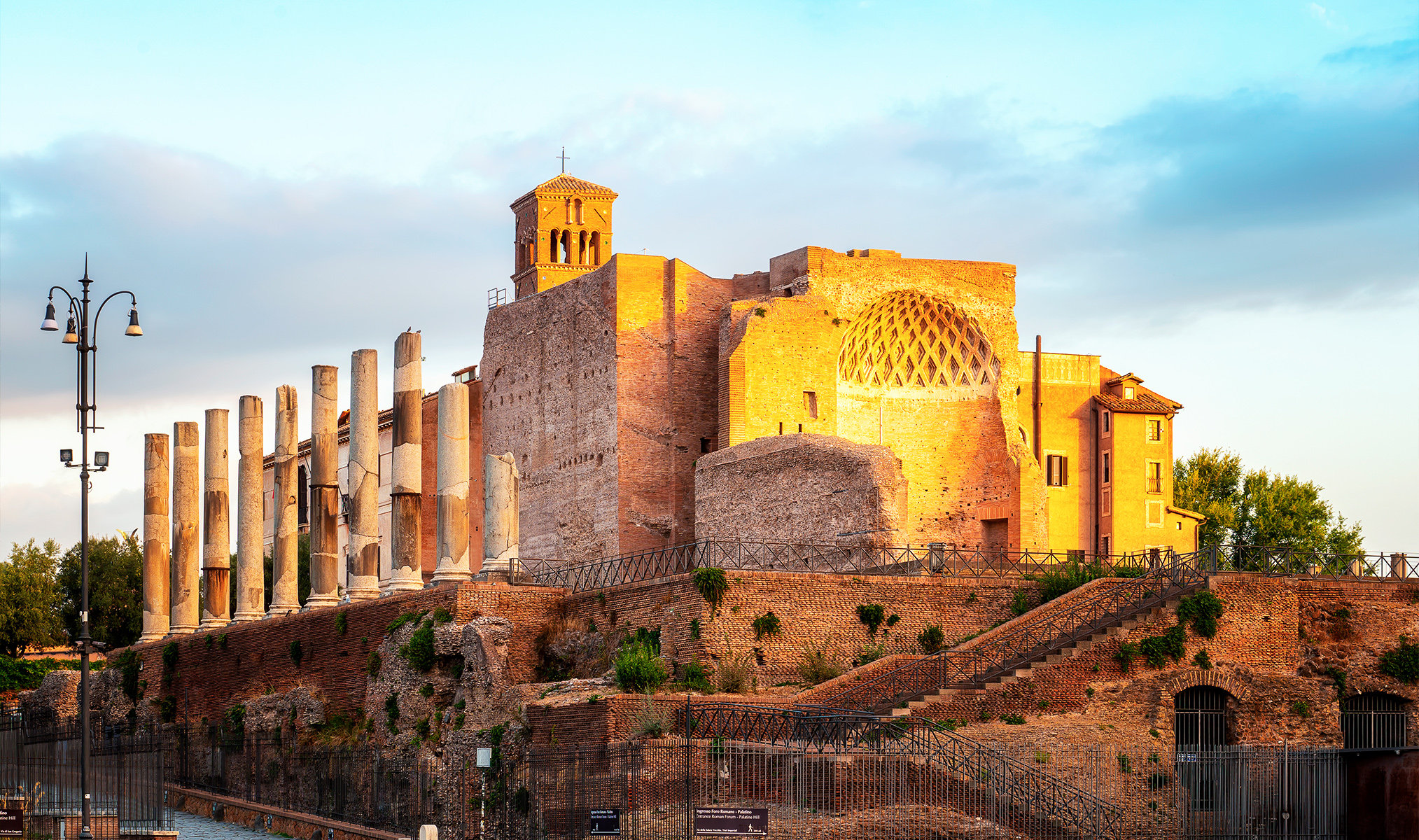
Photo: Jasmine_K/ Shutterstock.com
Book your Rome accommodation with ZenHotels
Pack your travel pillow and get ready for the trip of a lifetime to Rome. The city is an easy place to travel with small children and offers something for visitors of all ages. At ZenHotels, we’re here to help streamline the process of finding the best places to stay in Rome.
Get access to the best hotel rates throughout Rome and the surrounding Italian towns, as well as over 220 other countries with ZenHotels. Download the ZenHotels mobile app to access exclusive rates on your accommodation for Rome, from luxury small hotels to cozy B&Bs and popular hotels.

